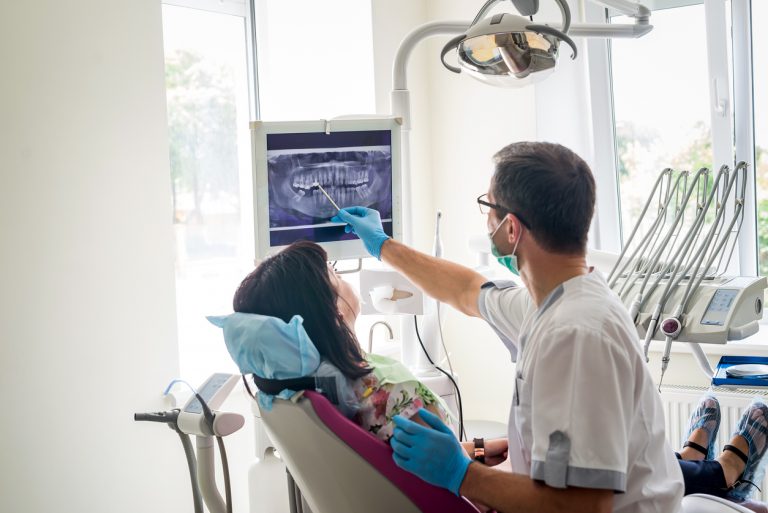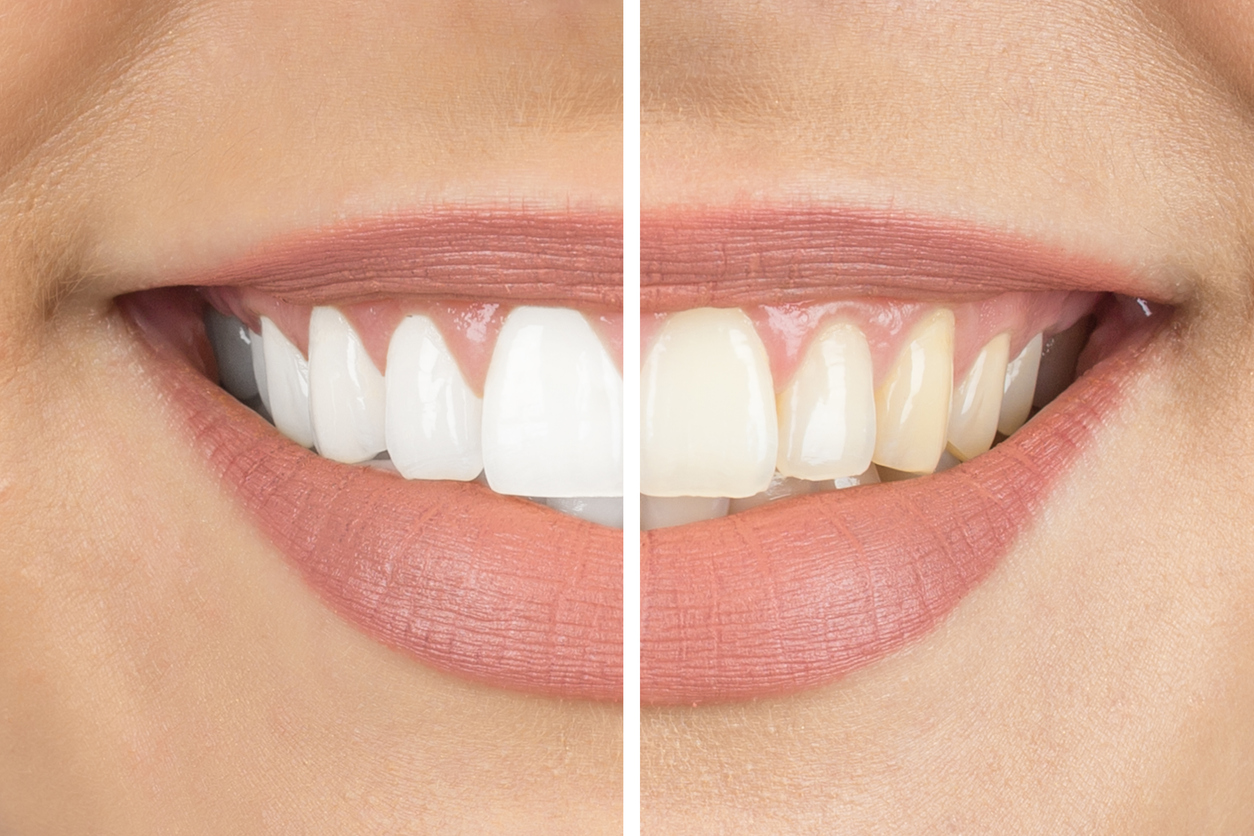With summer almost here, many people start thinking about whitening their teeth. Although there are certain considerations to be made, almost anyone can whiten their teeth. This month we’ll discuss the safety of tooth whitening as well as the options we provide to patients.

The discoloration of teeth over time can result from exposure to substances such as tobacco, coffee, and tea. This staining occurs in the interprismatic region internally on the enamel, which causes the tooth to appear darker or more yellow overall. Tooth whitening or tooth bleaching procedures attempt to lighten a tooth’s color in either of two ways: by chemical or mechanical action.
Will Whitening Damage My Teeth?
One of the most common questions we receive about whitening is, “Am I going to cause damage to my teeth?” Both over-the-counter products, as well as in-office procedures, are safe for the teeth when used as directed. Overuse of these products may result in damage to the enamel, but if you’re able to follow directions this isn’t an issue.
Whitening of any kind may make the teeth more sensitive (temporarily), especially if you have a recession. It’s important to remember that this sensitivity, is not an indicator that anything is wrong. If you have severe recession or erosion/wear on the teeth, you may be advised not to whiten or to whiten with modifications.
In any case it is important to ask your dentist if you’re a good candidate for whitening. It’s important to note that crowns and fillings will not whiten, they will remain whatever color they were at placement.
Whitening Options
-Toothpaste:
This is the first and easiest place to start. Tooth whiteners in toothpaste work through mechanical action. They have mild abrasives which aid in the removal of stains on the enamel. Although this can be an effective method, it does not alter the intrinsic color of teeth.
Many whitening pastes contain the same ingredients but others may be more abrasive. If the discoloration is deeper or in the dentin, this method of tooth whitening will not be successful. We recommend doing a bit of research to determine which option is best for you.
-Strips:
Whitening strips have been around for a while now and are a quick way to lighten teeth in a pinch. They are a bit tricky to use as they don’t always stay in place well. If you need a quick whitening option for an event and can’t make it into the office, the strips are an easy choice.
-Customized Whitening Trays:
We offer complimentary whitening trays to all of our new patients. We will take a scan or mold of your teeth and make custom trays. We provide the whitening gel with instructions. As long as you maintain appointments and don’t neglect your oral health, we’ll continue to supply the whitening gel. All you have to do is ask at your hygiene visit! The trays take an initial 2 weeks of daily use to achieve maximum whitening but from there require touch ups as needed.
The one thing to remember with one-stop whitening is that as soon as you start eating and drinking you are beginning to stain your teeth. Maintenance is key and we highly recommend customized whitening trays for this purpose!
– In-Office Whitening:
A popular treatment you may have heard of is ZOOM! This is a product of Philips, which is a brand we feel confident in. In the office, whitening is not something we offer at our practice, but acknowledge the benefit of being able to whiten in one visit.
The one thing to remember with one-stop whitening is that as soon as you start eating and drinking you are beginning to stain your teeth. Maintenance is key and we highly recommend customized whitening trays for this purpose!

Don’t Forget Good Homecare!
We wouldn’t be doing our jobs if we didn’t highlight the fact that good homecare, will help keep your teeth white naturally. Studies show that patients who have whitened their teeth tend to take better care of them. Brushing twice per day with an electric toothbrush and flossing or using a water flosser daily will help prevent plaque and stain buildup that discolors teeth. We also recommend a source of fluoride. It’s a good idea to use sensitive or high-concentration fluoride toothpaste, leading up to whitening to help prevent sensitivity.
How Long will the Results Last?
This is another FAQ. Whitening results are very much dependent on your homecare (discussed above) and your habits. If you’re a habitual coffee drinker, it’s a safe bet that your teeth with stain faster than someone who isn’t. Similarly, if you frequently drink red wine or tea, you can expect similar outcomes. A couple of tips to try are to rinse with water after consuming these beverages or consume through a straw to prevent the staining liquids from flowing over the teeth.
The better homecare you have and the fewer staining beverages you drink the longer you can expect your results to last. It is also important to be mindful that everyone’s teeth will whiten to a different shade. Depending on how long the stain has been present and even differences in the thickness of the outer enamel layer.
Some enamel defects cannot be reversed or corrected with whitening. We’d love to discuss the best whitening options for you! Everyone’s mouth and habits are different and what works best for you, may not be the best for someone else. Like all of our treatment planning, we enjoy tailoring our recommendations based on your individual needs. Feel free to discuss this with your hygienist at your next visit!
References
Mouth Healthy – https://www.mouthhealthy.org/en/az-topics/w/whitening
Colgate – https://www.colgate.com/en-us/oral-health/cosmetic-dentistry/teeth-whitening/tooth-whitening
Wikipedia – https://en.wikipedia.org/wiki/Tooth_enamel#Tooth_whitening


